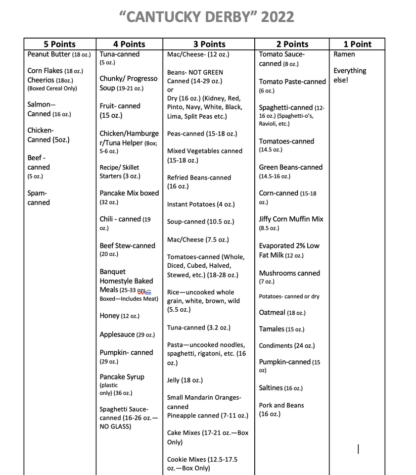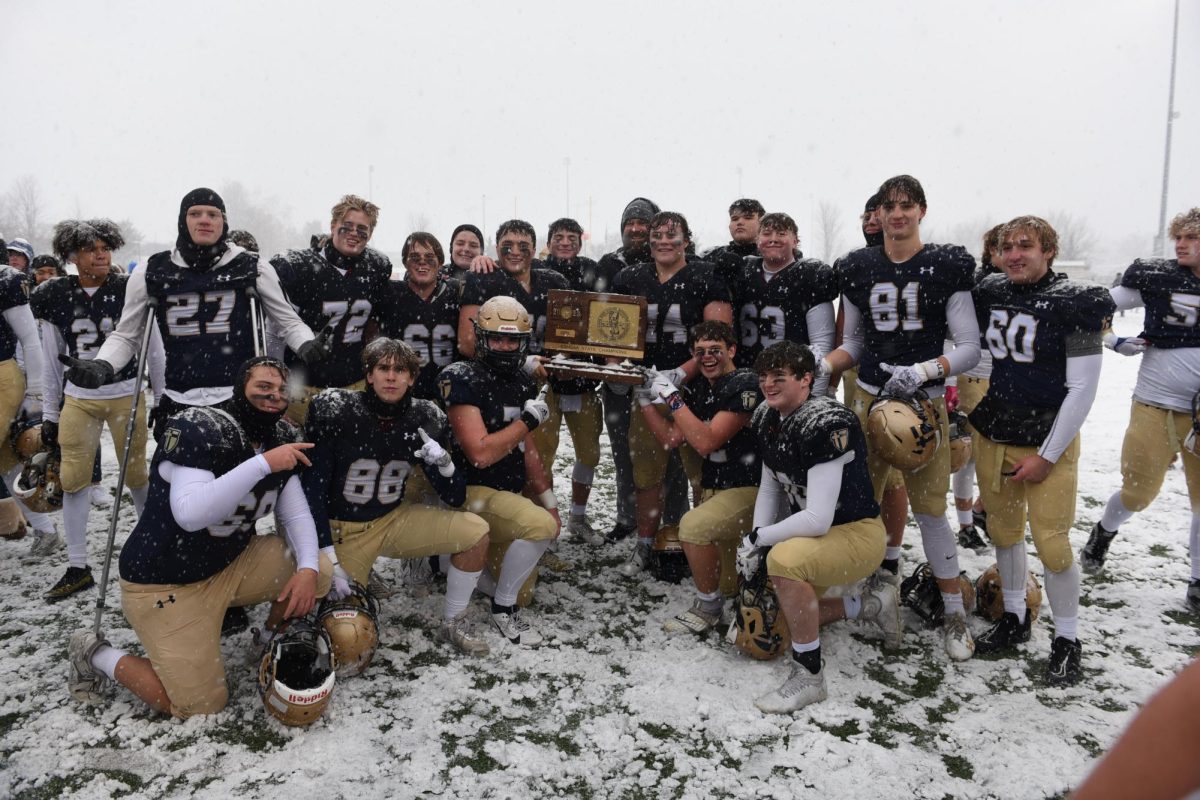CFD Confusion Cleared/ Explanation on Class Competition
Seniors unexpectedly beat the juniors this year in CFD, but how did they do it and how does this affect the day off?
Senior council members smile with Fr. Andrew in front of the catholic charities collection bus
November 17, 2022
As a student body, we are often told that the Canned Food Drive is the biggest form of class competition we have all year. A lot of students understand that the class with the most cans gets 8 class competition points, second place gets 6, third gets 4, while fourth gets 2. But that’s where the confusion starts for a majority of us. If that’s the case, how did seniors beat juniors if they had a significantly higher number of cans? And how do those points affect getting our day off? Below I’ll explain the seniors’ unexpected victory, and how this plays into the big picture.
I’m sure you all have had your classes’ student council members yelling about “Fruity Friday!” or “Miercoles Frijoles! (Wednesday beans)”. This is because these select items are worth more on select days. These items are chosen based on catholic charities’ wants and needs for the year, as well as the amount of points they are typically worth. Each year, a new point sheet is drawn up and used when counting cans. There are 5 categories: 5 points, 4 points, 3 points, 2 points, and 1 point. When counting your cans, a student council member will tally on a separate blank point sheet how many cans go into each point value. So for example, if you bring in 1 package of ramen, 3 cans of fruit, and 2 cans of tomatoes, a student council member will tally 1 mark under 1 point (ramen), 3 marks under 4 points (fruit), and 2 marks under 2 points (tomatoes). This creates a total of 17 points from just 6 items. But, if it were fruity Friday (where fruit points are tripled), the student council member would mark down the 3 marks on a separate sheet just for fruit, so the fruit would be counted for 36 points instead of 12, bumping the total number of points from 17 to 41. On the final Monday of CFD, the juniors brought in 18.5 pallets of cans. But because seniors had used the point days to their advantage, they were able to place first with less money and fewer cans.

If you found that all confusing, just you wait. Class competition points are where the real fun begins. At the beginning of each year, each class is given a set “quota” of points they are required to meet in order to achieve their day off. Just like Canned Food Drive, each class competition activity has 4 placements of points. The quota is based on each class’s expected placement in these activities. Freshmen are always expected to place 4, so their quote is based on the lowest points value possible for every activity. Sophomores are expected to get third, juniors second, and seniors first. Looking at canned CFD, the seniors’ quota for Canned Food Drive was 8 points, so in order for seniors to stay on track to get their days off, they needed to place first to meet their quota. Obviously, things don’t always go as planned. If the juniors were to beat the seniors and get first, they would get 8 points while the seniors would get 6, causing the seniors to fall behind on their quota by 2 points. With seniors being expected to place first in every activity, there isn’t much wiggle room for mess ups. Just falling behind by one point can be enough to cost the day off. Nobody’s perfect, and each grade makes mistakes. So there are very few extra point opportunities offered for extra credit points. But relying on these to keep a grade on track is a dangerous game. Ask your class officers how you can help ensure your class has the day off!
















































































